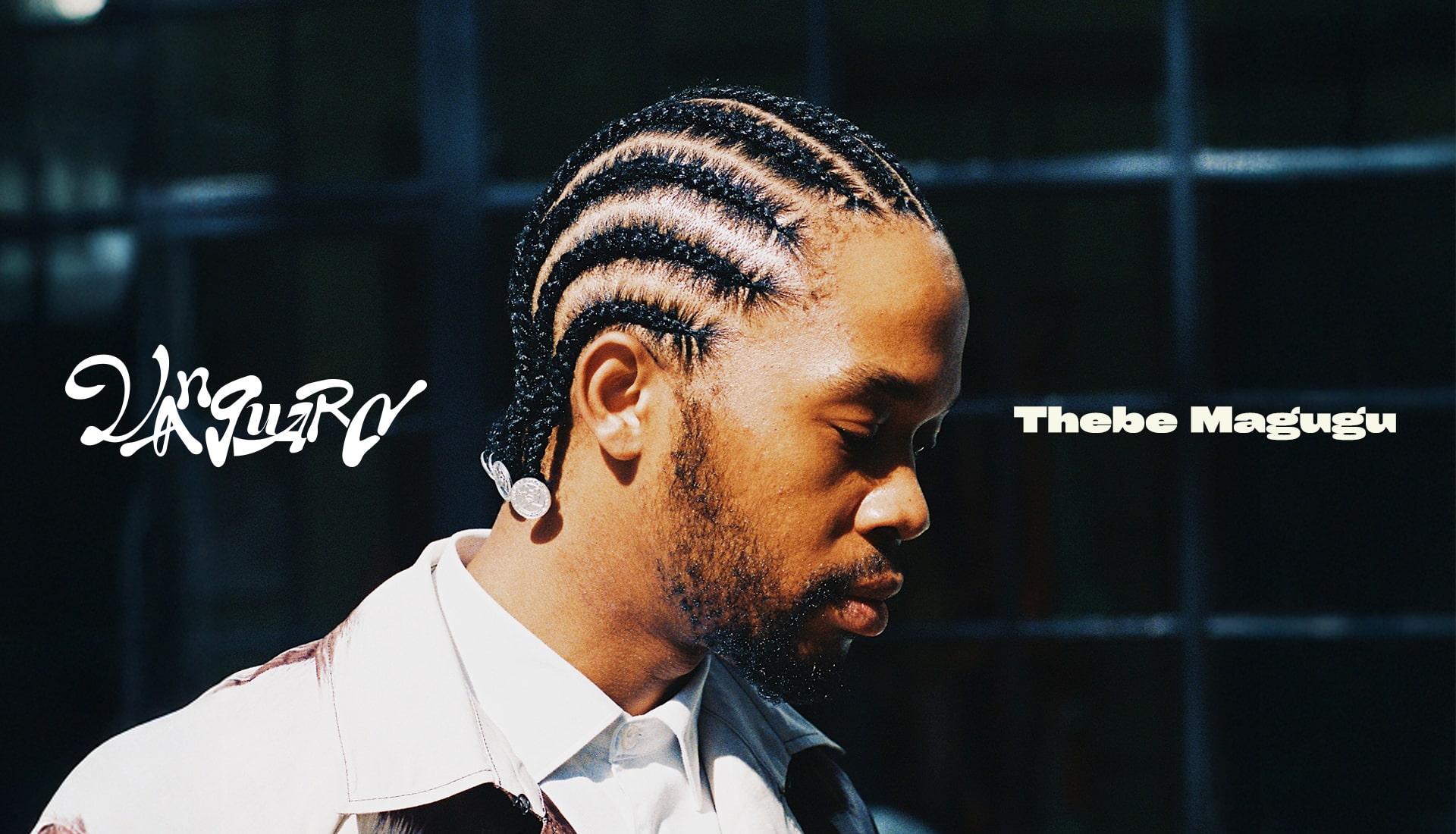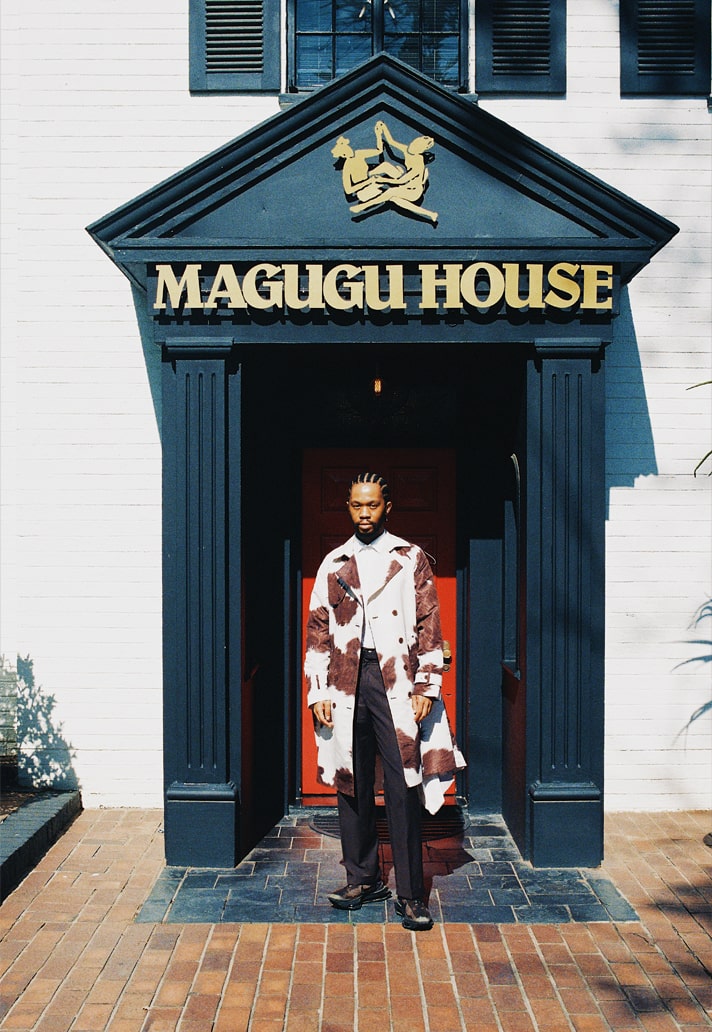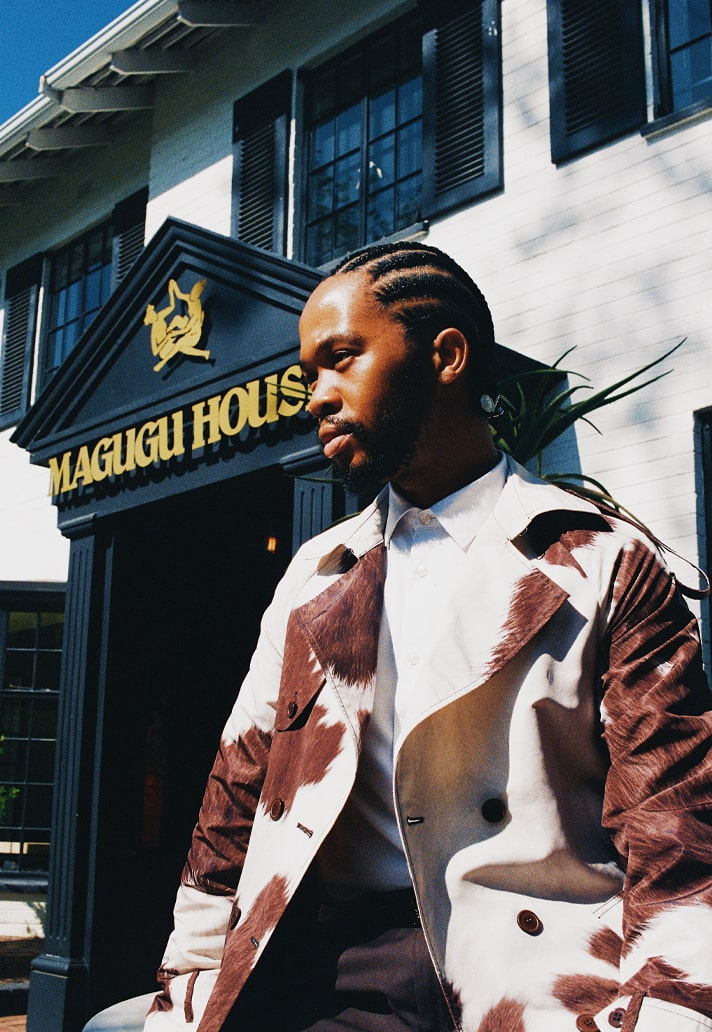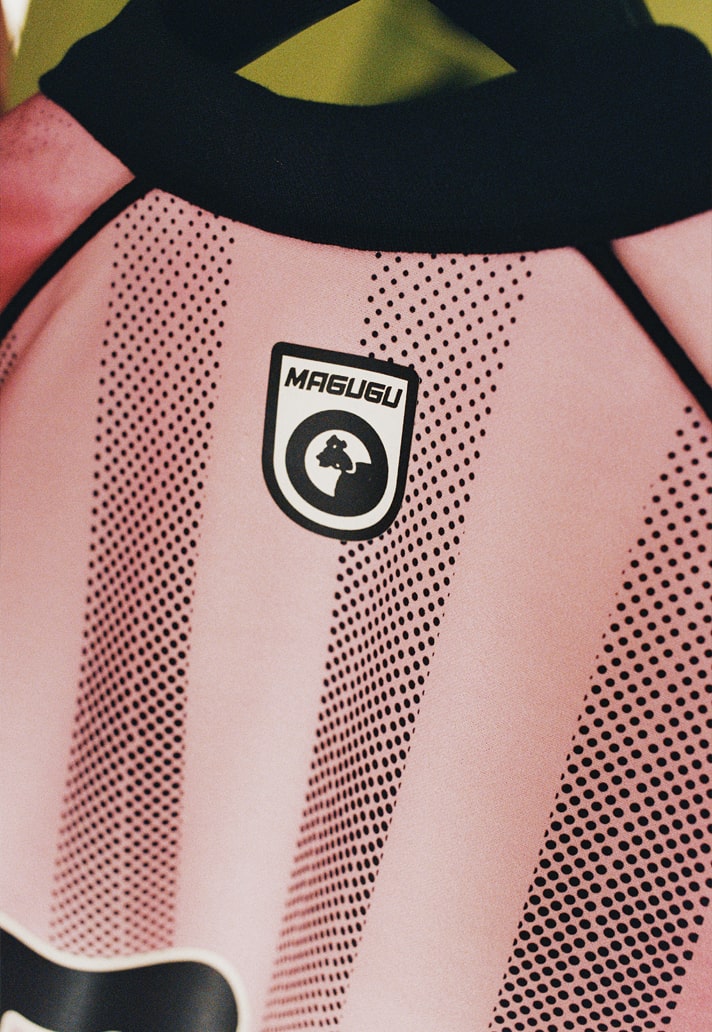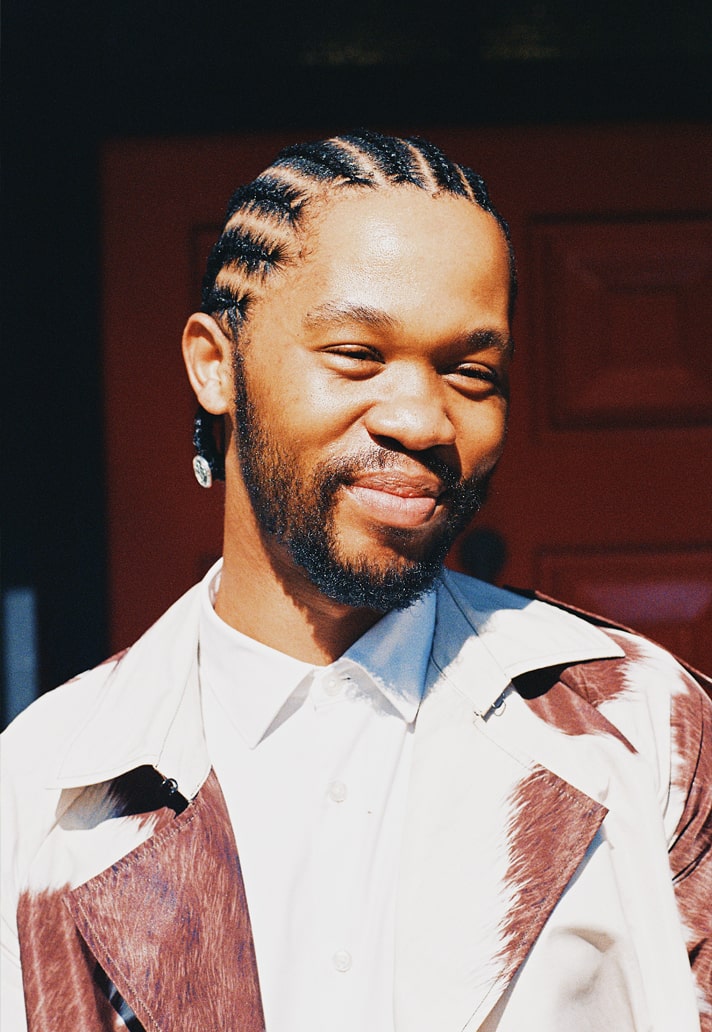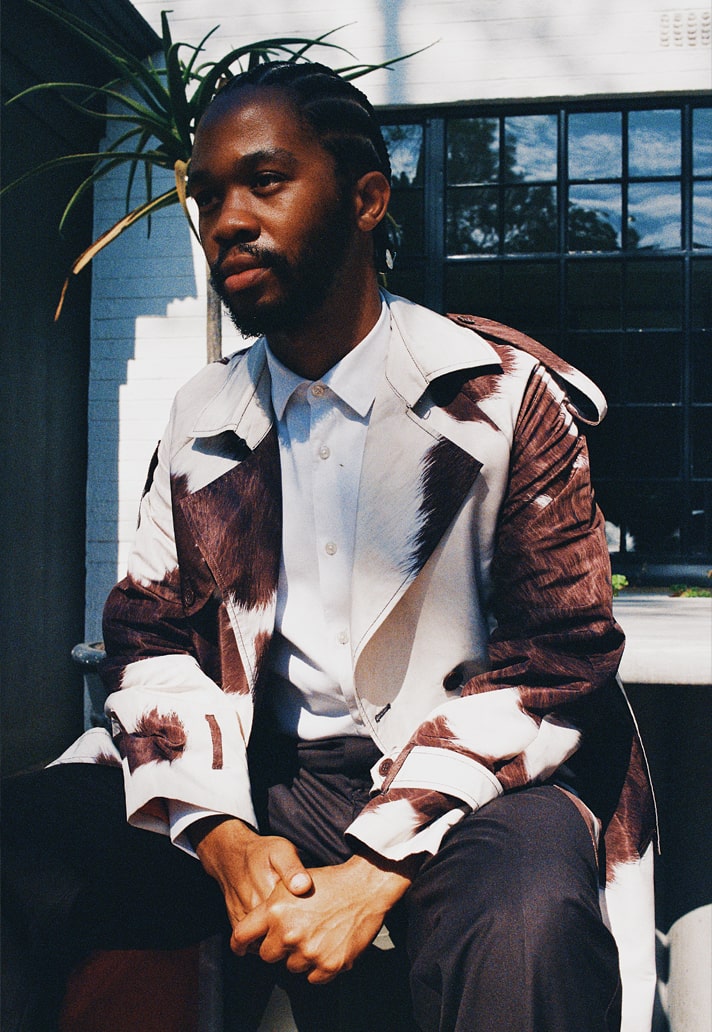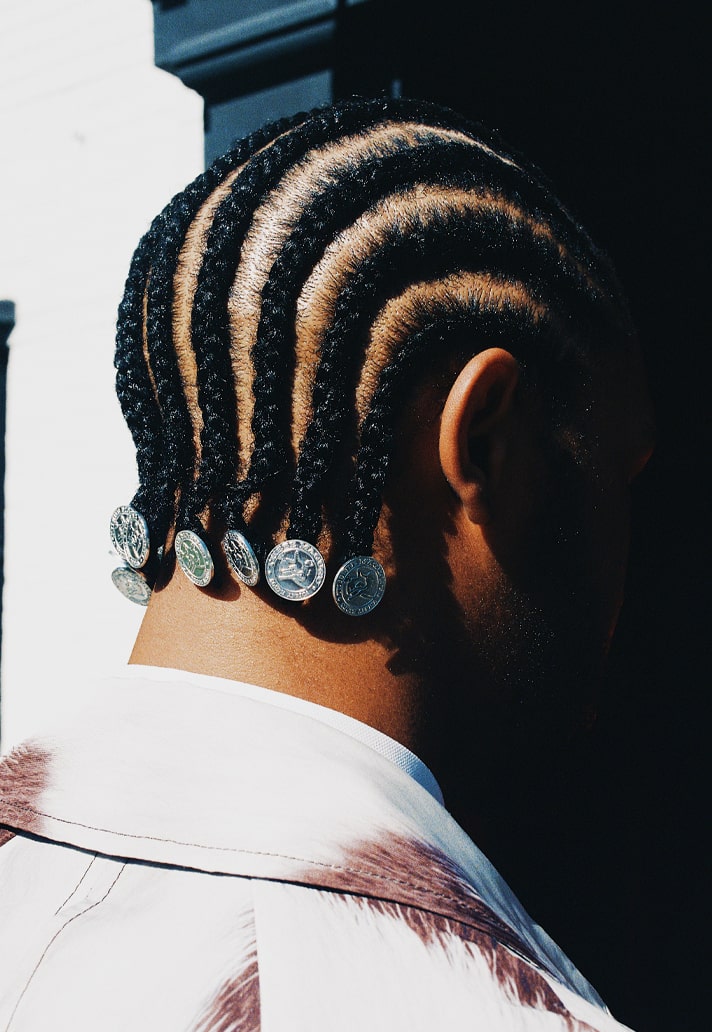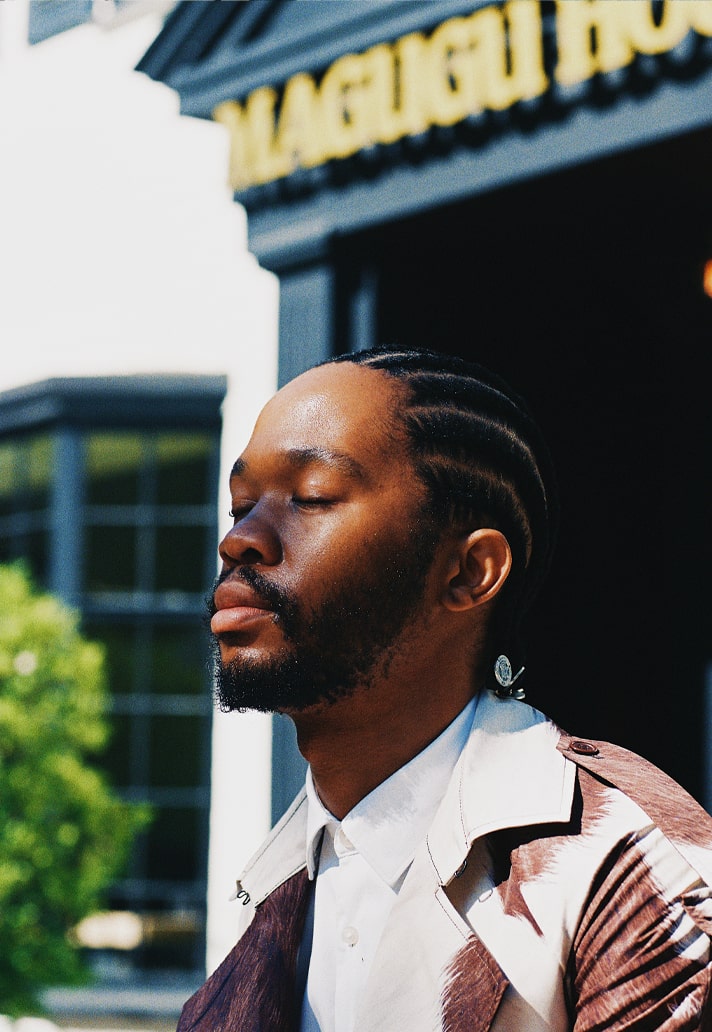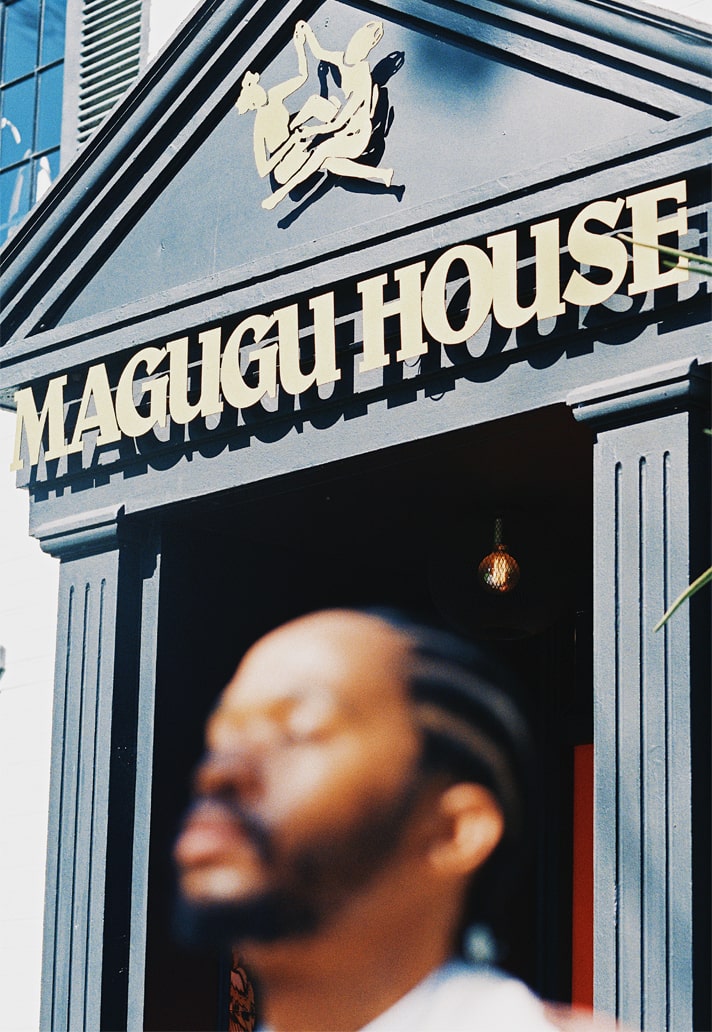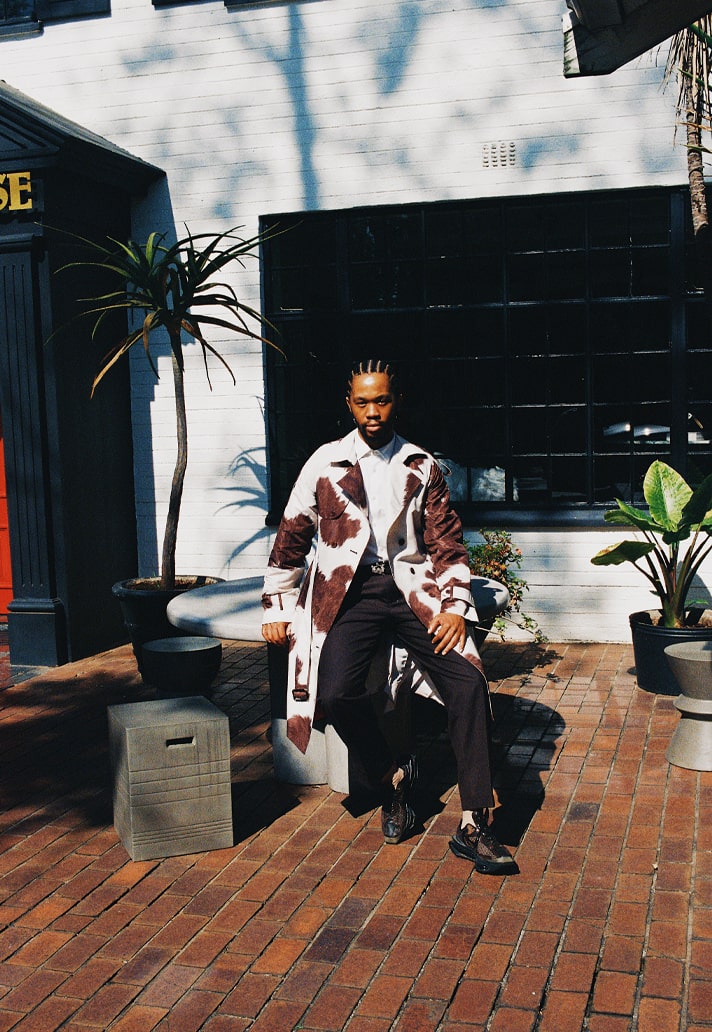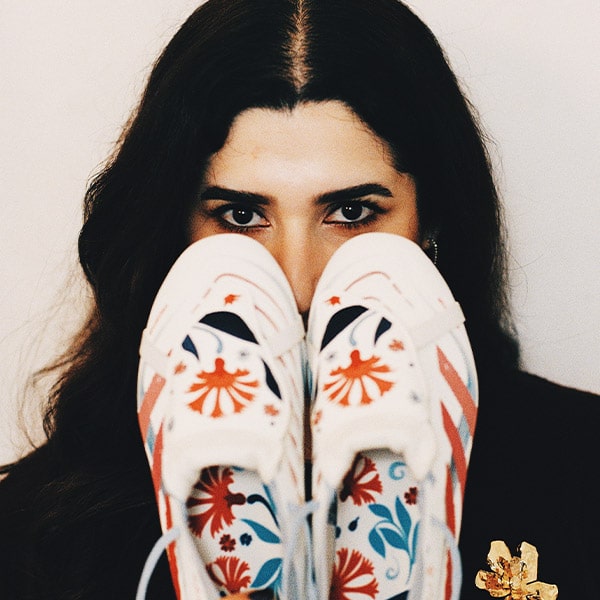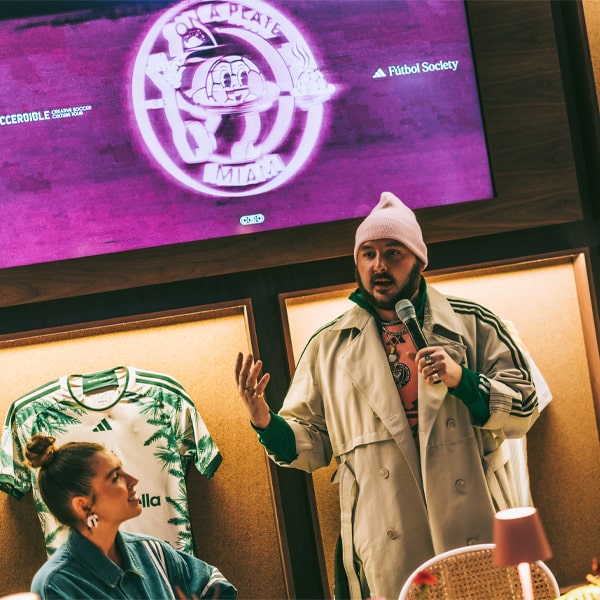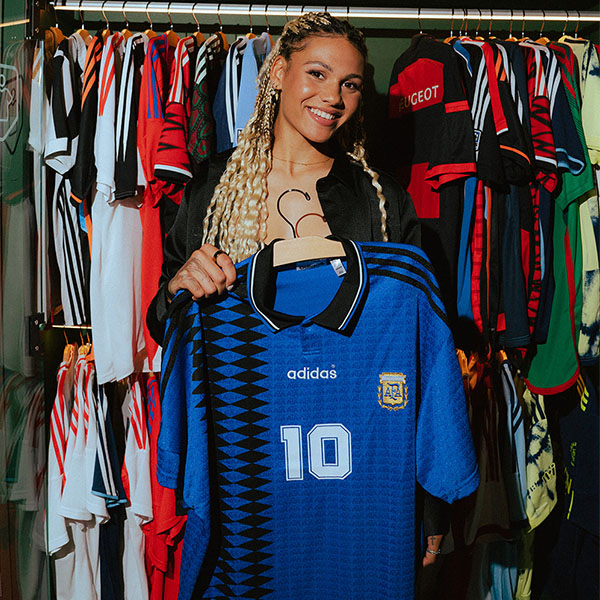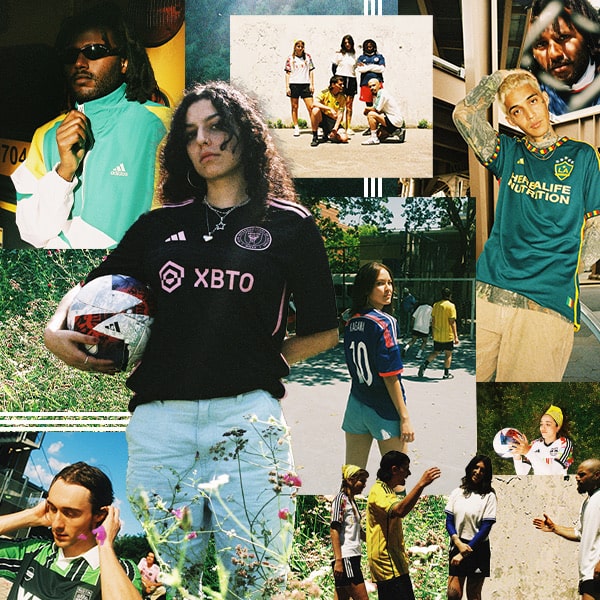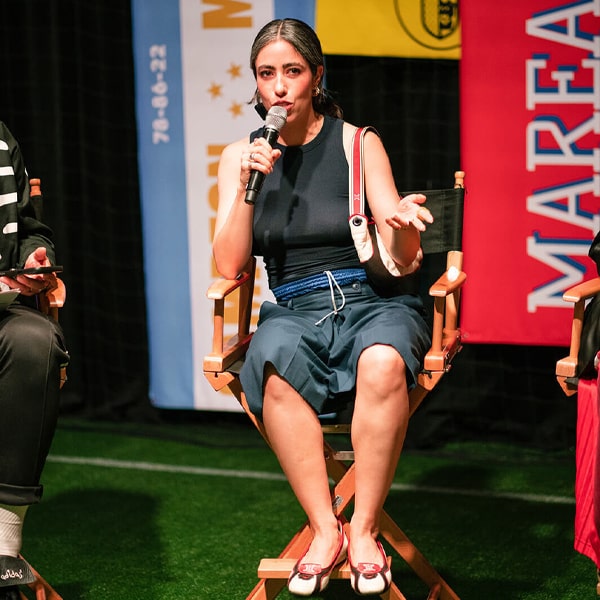Welcome to SoccerBible’s ‘Vanguard: The Creative Soccer Community' series — our celebration of those reshaping the seams of creative soccer culture. At the crossroads of high fashion and football’s raw emotional power, few figures embody the spirit of this movement like Thebe Magugu.
From the heart of Johannesburg to the catwalks of Paris, Magugu has charted a path uniquely his own. Winner of the 2019 LVMH Prize and a true custodian of South African heritage, his work is less about trends and more about truth — a fashion historian unearthing stories through cloth, print, and silhouette. His foray into the world of football — most notably with the striking 23/24 Orlando Pirates kits in collaboration with adidas — proved just how potent that storytelling can be when stitched into sport.
But Thebe’s contribution doesn’t stop at professional kits. Enter Magugu FC — a fictional team composed of artists, designers, and cultural figures, all brought together through his lens. It’s here, in this imagined XI, that football becomes a language for deeper conversations around identity, community, and creativity.
In this conversation, we trace Magugu’s journey from a rejected application to Central Saint Martins to dressing football royalty, exploring how sport, culture, and fashion collide in his ever-expanding universe. This is about more than football shirts — it’s about rethreading the narrative of what creative soccer culture can be.
To start with, you mentioned in a recent workshop that your journey began with some disappointment. Could you talk us through that?
Yeah, it’s been quite a whirlwind. I was telling this story recently — how things really started with rejection. Growing up, I’d always watch Fashion TV and thought fashion only really happened in the fashion capitals — places like London, Paris, New York. So when I was in grade 11 and 12, I applied to Central Saint Martins because I thought that’s where you had to be to make it as a designer. I got a rejection letter saying they didn’t find me creative enough. That was tough, but honestly, it turned out to be such a blessing.
Tell us about how you now see that rejection as a blessing?
It meant I stayed in South Africa, moved to Johannesburg, and that’s where I really started discovering the richness around me — the poetry, the heritage, the stories that are so unique to this place. I realised how privileged I am to have access to all of this, to be immersed in such powerful cultural references.
Have you ever thought of framing that rejection letter?
[Laughs] I should, actually. I found it again recently and it just made me pause — like, wow.
So much of your work is rooted in storytelling. How does soccer, and sport more generally, fit into your creative world?
Fashion and sport share this beautiful common ground — they bring people together. In a country like South Africa, where divisions run deep, those two things are some of the few real unifiers. They create communities. That sense of togetherness, of shared joy, is what I love and what I’m drawn to in both worlds.
Your collaboration with Orlando Pirates felt like a landmark moment. What was that like for you?
That project was really special. It was my first deep dive into the sports space, but even then, it was all about storytelling. I studied fashion design, media, theory — the intersection of product, image, and narrative really drives me. So when Adidas approached me to design a kit for Orlando Pirates, it felt right. I come from a family of Pirates fans, and growing up with that fanfare made me want to contribute something meaningful.
Can you tell us about the design of that kit?
The shirt looks like a scaled-up skull, but if you look closely, it’s made up of intricate lines — a labyrinth or maze. That design references the grueling journey the club has gone through, especially during South Africa’s more difficult times. There’s a small gap that leads to the skull’s nose, symbolising how they navigated adversity to get where they are now.
From that moment, you started your own project — Magugu FC. Can you tell us more?
Absolutely. I created a fictional team called Magugu FC and designed kits — starting with a home kit featuring 11 people across different disciplines. Artists, musicians, creatives — each assigned a football position. Nelson Makamo was the defender, stylist Ibrahim Kamara was the goalkeeper. For Valentine's Day, I even created a special edition training kit. It’s been amazing to merge my universe with the language of sport.
"Fashion and sport share this beautiful common ground — they bring people together. In a country like South Africa, where divisions run deep, those two things are some of the few real unifiers. They create communities. That sense of togetherness, of shared joy, is what I love and what I’m drawn to in both worlds."
It sounds like juxtaposition plays a big role in your creative process?
Definitely. I’ve always loved putting seemingly unrelated things together to make something new. There’s a quote I once heard from the Norwegian photographer Sølve Sundsbø — he said, “I’ve seen underwater photography, and I’ve seen ninjas. But I’ve never seen underwater ninjas.” That stuck with me. It’s about merging ideas, disciplines, references to create something unexpected and powerful.
Did you ever imagine your work — especially the football-inspired pieces — would gain such traction globally?
I think anything tied to football in South Africa automatically grabs attention. It’s so deeply embedded in our culture — it’s a language, a way of life, an escape. Whether it’s formal jerseys or fashion reinterpretations, people really connect to it. That connection brings visibility.
Do you enjoy the idea that your designs represent South Africa on a global stage?
Absolutely. As I said, I used to believe I had to leave to succeed. But staying here made me realise the privilege of being immersed in our culture. When I started the brand, I wanted it to be encyclopedic — capturing our histories, stories, and people before they’re forgotten. Using fashion as a Trojan horse to preserve culture — that’s what drives me.
How do you view your role in the global fashion landscape now? Do you feel accepted by the big fashion capitals?
I love being an outsider. I think there’s power in disrupting templates. At first, I tried to fit into the mould — the shows, the timelines, the expectations. But I burned out. That’s when I realised I needed to follow what my business, and my creativity, required — not what the global industry dictated. Those old templates are crumbling anyway. Why be part of that when I can build my own universe?
Looking forward, how do you keep setting new aspirations for yourself?
The beauty of storytelling is that there’s always more to discover. Our history, our people — they hold endless narratives. Each season becomes a new reference point, a new encounter, a new conversation. I like to think of myself as a kind of fashion historian — constantly uncovering and reflecting what contemporary South Africa really is.
Can you tell us about your collection ‘Counter Intelligence’?
That one was powerful. I interviewed apartheid spies who had defected to the underground. Hearing their stories — betraying friends, operating in universities — was wild. One of them even sent me her scanned fingerprints from a police station. I turned that into a textile that looks like polka dots from afar, but up close, it’s the fingerprints of a confessed spy. That’s how I use fashion — to tell real stories in unexpected ways.
Do you see yourself continuing to explore soccer as part of your work?
One hundred percent. The last collection I did, called ‘Reparations,’ was partly about reconnecting with my estranged father, who’s a football fanatic. The final pieces combined flowing dresses with elements of soccer jerseys — crests, silhouettes, graphics. It’s that tension and merging of different worlds that excites me.
You’ve mentioned how much fashion is starting to cross into sports. How do you feel about that trend?
Fashion has a tendency to want to be everywhere, sometimes greedily. But when the crossover is authentic, when it's done out of love and not just for relevance or revenue, it's powerful. Sports communities are some of the most real, most loyal. And I think that’s why fashion is drawn to it — it feeds off that community energy.
What do you personally love most about soccer culture?
Loyalty. It’s such a defining trait. Even when a team isn’t winning, people stick by them. That kind of devotion says so much about a person’s character. And I’ve seen how soccer becomes people’s sanctuary — a place where their emotions, hopes, and fears are reflected. That’s something I deeply respect.
Photography by SoccerBible.
Follow Thebe Magugu to see more of the brand's work.
